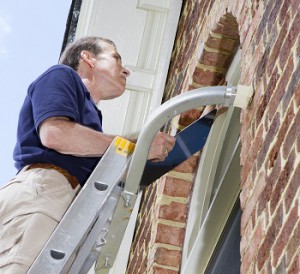It’s always surprising how many property investors don’t understand how depreciation works and how they can financially benefit from it.
So, we’ve put together this helpful property depreciation overview so you can won’t be one of those investors!
In this article, we’ll explain what depreciation is, how a depreciation schedule works and what you can and can’t claim.
What is Property Depreciation?
As investment properties get older and the items within them suffer wear and tear, they decline in value.
The Australian Taxation Office (ATO) recognises this and allows investors to claim this loss of value as a tax deduction against their assessable income.
This is called depreciation of investment property.
The way that you claim depreciation is via a depreciation schedule, which is prepared for your property by a specialist quantity surveyor but it’s important that you understand how it works as well.
There are two different types of depreciation allowances – Plant and Equipment as well as Building Depreciation.
Officially these are called the Capital Works Allowance and the Depreciating Assets within the property.
The ATO also refers to these respectively as Division 43 and Division 40.
The Capital Works (Division 43) allowance is the deduction available for the building’s structure, along with fixed assets such as built-in cupboards.
Essentially, this is anything that is a permanent fixture or cannot be removed easily from the property.
The newer the building (such as a brand-new apartment) the higher the depreciation deductions.
Renovated properties can also create depreciation deductions because the property now has new components which may be claimable.
The Capital Works allowance is applicable to buildings built after 17 July 1985, and for most properties is set at a flat rate of 2.5 per cent per annum, claimable over 40 years.
Properties built until 15 September 1987 were able to be depreciated at four per cent for 25 years.
You can only claim deductions for the period during the year that the property is rented or is available for rent.
If you live in a property and intend to rent it out in future, investment property depreciation is not available to you until it is used for rent generation.
Depreciating Assets (Division 40) are items commonly referred to as “plant and equipment”, or “plant and articles”.
Loosely these assets are any item that can be picked up or easily removed from an investment property, such as curtains and hot water systems.
While the ATO uses a flat 2.5 per cent for the Capital Works allowance, it stipulates that depreciating assets lose value at varying rates, and so has defined an “Effective Life” for more than 1,500 assets to help investors calculate their investment property depreciation schedule.
Investors are allowed to use two methods to calculate the amount of decline in value of Depreciating Assets each year – the “Prime Cost Method” or the “Diminishing Value Method”.
The Prime Cost method assumes assets depreciate in value in a straight line (the same deduction each financial year), while the Diminishing Value method assumes assets depreciate faster in the short term, and progressively less.
Both methods are based on the Effective Life of an asset and both claim the same total value over 40 years.
What is meant by a Depreciation Schedule?
As mentioned above, a depreciation schedule must be prepared by a quantity surveyor.
In fact, according to the Australian Institute of Quantity Surveyors’ Code of Practice, in order for a depreciation to satisfy ATO requirements, a qualified quantity surveyor must prepare the depreciation schedule.
The preparation of a depreciation schedule should always include a site inspection where the quantity surveyor will take detailed photos and notes documenting sufficient evidence to prepare the report.
The report will include a value of each and every qualifying plant and equipment item within the property, the cost of construction at the time the building was built and a projection of the deductions claimable by the owner per financial year over 40-year period.
Depreciation is the key to increasing cash flow on a residential property and can make the difference between a tax bill or a tax refund at the end of each financial year.
However, research shows that 80 per cent of property investors are failing to take advantage of property depreciation and are missing out on thousands of dollars in savings.
It’s a good idea to get a depreciation schedule prepared for your investment property as soon as you officially own it and, if you can, before your tenants shift in.
This is to allow the quantity surveyor easier access to the property.
If the property is already tenanted, however, just arrange with your property manager to give the tenants the necessary notice for the quantity surveyor to gain access to the property to prepare the depreciation schedule.
It’s also important to realise that you only need to get a depreciation schedule prepared once (unless you’ve undertaken renovations) as the report will outline the deductions for the next 40 years, which your accountant will use when calculating your tax return each year.
How much depreciation can I claim?
Because no two properties are the same, the types of deductions which you can claim can vary significantly.
As a property investor, however, you don’t need to understand the nitty gritty too much because a specialist quantity surveyor will prepare the depreciation schedule on your behalf.
As a general guide however, some of the Capital Works allowances can include:
- Built-in kitchen cupboards
- Clothes lines
- Doors and door furniture (handles, locks, etc.)
- Driveways
- Fences and retaining walls
- Sinks, basins, baths and toilet bowls.
Examples of Plant and Equipment allowances can include:
- Hot water systems, heaters, solar panels
- Air-conditioning units
- Blinds and curtains
- Light shades
- Swimming pool filtration and cleaning systems
- Security systems.
A depreciation schedule will generally include a detailed outline of two major components:
Plant and equipment assets (division 40), which includes assets which can be easily removed from the property.
The asset’s condition, quality and effective life all determine the allowances available.
Capital works deduction (division 43) is the deduction for the building’s structure.
Available on properties constructed post-1982 (non-residential) and 1987 (residential).
There are a number of case studies available online so you can better understand the potential depreciation allowances for houses, townhouses and units.
As an example, however, here is the difference that a depreciation schedule can make to a property investor who bought a new unit for $450,000.
Can I claim depreciation on an old house?
As we’ve mentioned above, if your residential property was built after July 1985 you will be able to claim both Building Allowance and Plant and Equipment deductions via a depreciation schedule.
If construction on your property commenced prior to this date, you can only claim depreciation on Plant and Equipment, but it will still be worthwhile.
An important element of property investment depreciation is the ability to claim deductions for properties that have been renovated, either by you or the previous owner!
Of course, you will need to know how much you spent on renovations, because it is an ATO obligation.
That’s why it’s so important to keep comprehensive records for each renovation project you complete.
If the previous owner completed the renovation you are still entitled to claim depreciation.
In either case, where the cost of renovation is unknown, a quantity surveyor has been identified by the ATO as appropriately qualified to make that estimation.
What is a scrapping schedule?
If you’re undertaking renovations, you can use what is called a scrapping schedule and actually depreciate the items that you’re destroying during the project.
Firstly, before you start the renovation, you’d want to engage a quantity surveyor to inspect the property with you.
That way, you can show them which parts of the property you’ll be changing such as the removal of carpet because you’re going to polish the floor boards underneath.
You can also highlight other aspects such as the removal of the existing kitchen and bathroom.
The quantity surveyor will then prepare a scrapping schedule of all of the items which are going to removed and destroyed from the property, which calculates a dollar depreciate value for each item, which again you can claim at the end of the financial year.
If you don’t engage a quantity surveyor until after the renovation is completed, they will probably still be able to prepare a scrapping schedule but it may not be as accurate or as lucrative as one that is prepared before the project begins.
A quantity surveyor can also prepare a depreciation schedule for the renovated property once it’s completed which takes into account all of the new Plant and Equipment, whereas a scrapping schedule reflects items that have been destroyed during the renovation.





No comments:
Post a Comment